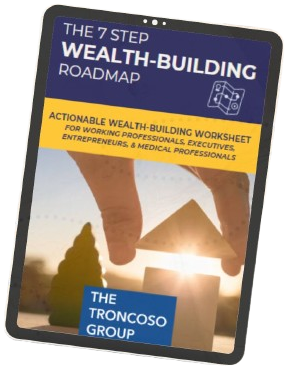If you’re a business owner, you already know the importance of keeping a close eye on both your income and expenses. But let’s be honest—between running operations, managing people, and putting out fires, it’s easy for budgeting to slip to the bottom of the priority list.
A business budget represents the operational blueprint of your small enterprise and, to a lesser extent, the path for your life’s finances as a business owner. Too many owners get so caught up in the daily grind that they forget why they started in the first place. It wasn’t just to keep the business afloat, but to build a life of financial independence.
In this comprehensive guide, we’ll address the essentials of how to prepare a business budget that truly accounts for your business goals. In these ten steps, we’ll help you assess your current finances, create a profit and loss statement, set clear targets, build reserves, and even plan for retirement.
1. Get a Clear Picture of Your Current Business Finances
Before you start making any projections or setting goals, you need to know your current numbers. So begin by gathering your financial records for at least the last calendar year. If your business is brand new, review the past few months or pull estimates from businesses that are similar to yours.
The more data you have, the easier it will be to find patterns and extract helpful information to create a realistic business budget. Here’s what you’ll want to gather:
- Revenue — Total income from sales, services, or other sources.
- Sales volumes — How many units or services you’re selling, broken down by product or category if possible.
- Gross profit — Revenue minus the direct costs of producing your goods or services.
- Net profit — What’s left after all expenses (operating costs, taxes, etc.) are subtracted.
- Fixed expenses — Costs that stay the same month after month, like rent, salaries, and insurance.
- Variable expenses — Costs that change depending on activity levels, like materials, shipping, or sales commissions.
- Taxes — Amounts you owe or have paid in business taxes.
- Debt payments — Loan repayments, credit lines, or other financing obligations.
- Owner draws or compensation — What you take home as the business owner.
If you haven’t already, be sure to separate business expenses from personal. Commingling expenses muddies the waters and can expose you to legal liability.
Pro tip: Many owners forget to value their own labor. If you’ve been forgoing a salary, add a realistic wage for yourself to those fixed costs so you see a true picture of profitability.
2. Create a Profit & Loss Statement
If you don’t already have a profit and loss (P&L) statement prepared for each quarter, now’s the perfect time to create one. This will also help you uncover important numbers like your net income—the key figure that tells you whether your business is truly profitable after covering all expenses, not just bringing in revenue.
Here’s how to build it:
- Start with your total income — Pull in every source of revenue, whether it’s from product sales, services, subscriptions, or other streams.
- List every expense — This includes both fixed and variable costs: rent, payroll, utilities, marketing expenses, software subscriptions, supplies, travel, taxes—you want the full picture here.
- Calculate your net income — Subtract your total expenses from your total revenue. This bottom-line number tells you whether you’re actually turning a profit or just moving money in and out without real gains.
Even if you’re a small business or just getting started, creating a P&L gives you clarity and confidence. Plus, you will also need it to prepare your tax statements at the end of the year (and to make your estimated tax payments if applicable).
Pro tip: Reconcile accounts weekly. Waiting until year‑end to spot errors is a recipe for stress. Use accounting software like QuickBooks, Xero, or Wave to link bank feeds, flag duplicates, and auto‑categorize recurring business expenses.
3. Watch for Hidden Costs
Hidden costs can quietly chip away at your profits without you even noticing. That’s why it’s so important to take time to comb through your financial statements and vendor contracts carefully.
Look for things like:
- Merchant processing fees that add up over time.
- Software subscriptions with creeping price increases—or subscriptions you forgot you’re still paying for.
- Small shipping surcharges that multiply as you scale your business.
By identifying and addressing these kinds of hidden costs early, you free up valuable funds you can redirect toward growth and you avoid those unpleasant surprises that can pop up at the end of a quarter.
4. Understand Expense Patterns
Tracking expenses for your business is key in helping to maintain a healthy bottom line. Your next step is to work on identifying patterns in both your fixed and variable costs so you can project them out over the next several months or year.
- Fixed costs (like rent, insurance, or salaries) are easier to predict and usually occur on a set monthly, quarterly, or annual schedule.
- Variable costs (like raw materials, shipping, or sales commissions) fluctuate based on production, sales, or seasonality. These might require a little more mapping and analysis, but over time you can spot patterns to help you build reasonable estimates into your budget.
When you know not just how much you’re spending but also when those expenses hit, you can smooth out your cash flow, reduce surprises, and better prepare for both planned investments and unexpected bumps.
5. Pay Yourself — and Your Business — First
A budget for a small business should never forget the business owner. Many founders unintentionally often fall into the martyr trap. They pay everyone else first while taking little or nothing for themselves. But you are the engine behind the business, and if you burn out, everything else suffers, including your personal financial plan.
Decide on a fixed amount or percentage you’ll pay yourself regularly and build it into your budget from the start. This ensures you’re treating your personal financial health as a priority, not an afterthought.
When it comes to your business, it’s also important to build in a target for profits. One helpful framework is the Profit First approach by Mike Michalowicz, which encourages setting aside profit before addressing expenses. This mindset helps create long-term sustainability, making sure your business supports not just operations, but also your own path to financial security.

6. Budget for Emergency Reserves
Reserves are the backbone of financial resilience. It’s helpful to build in three types of reserves into your budget: operating reserve, tax reserve, and personal emergency reserve.
An operating reserve, typically three to six months of expenses, protects your business during slow seasons or unexpected downturns. A tax reserve can prevent last-minute scrambles when quarterly or annual payments come due.
Finally, your personal emergency fund (three to six months of household expenses) shields your family from the ups and downs of entrepreneurship.
Review these reserves annually, increasing targets as your business and lifestyle expand.
7. Set Clear Goals and Target for Your Business Budget
Your budget is designed to actively guide where your money is going. Setting clear goals gives you focus, helps you prioritize spending, and lets you track your progress in a meaningful way.
Start by asking:
- What are your short-term goals?
Do you want to increase monthly sales by 10%? Launch a new product? Reduce overhead? Build a bigger client base? Be as specific as possible — vague goals like “grow the business” are hard to track. - What are your long-term goals?
Think 1–5 years ahead. Do you want to expand into a new market, hire a management team, double your revenue, or position your business for sale? These big-picture goals should guide the spending categories in your budget.
Once you know your goals, attach real numbers to them. For example, if you want to increase monthly recurring revenue by 15%, figure out how many new customers or upgrades you need. If you aim to cut costs, identify how much you want to reduce and from where. Break big goals into smaller steps and set quarterly or monthly check-ins so you don’t feel overwhelmed and can make adjustments as needed.
While a budget should create structure, it’s not meant to be rigid. Business conditions change, opportunities arise, and challenges pop up. Give yourself room to adjust as you go.
8. Forecast Multiple Scenarios
No one can predict the future, but you can prepare for it. Scenario planning involves outlining a base case (what you expect), a best case (what you hope for), and a worst case (what you fear).
For each, estimate revenue, cash flow, and expenses, then map out what changes you’d need to make—like adjusting marketing spend, cutting nonessential expenses, or ramping up hiring.
This exercise builds confidence and reduces panic when reality deviates from plan because you’ve already rehearsed your response.
9. Cultivate a Financially Savvy Culture
A budget works best when it’s shared and supported across your organization. Explain to your team why cost controls matter and how savings today can fund innovation, stability, and future raises.
Consider gamifying savings by setting department-level challenges and rewarding wins with team lunches or public recognition.
Finally, invest in staff development: workshops on reading financial reports or negotiating vendor contracts empower your team to think like owners, driving better financial outcomes across the company.
10. Plan (and Budget) for Retirement
Saving for retirement as a business owner doesn’t have to be overwhelming. In fact, even starting early with a small amount can make a huge difference later.
Depending on how much you can save, you have different retirement options to consider.
- An IRA (Individual Retirement Account) or SEP IRA: Great if you’re just getting started.
- 401(k): Ideal if you can put aside more and want higher contribution limits.
- Cash Balance Plan: If your business is thriving and you can contribute significant amounts, this strategy is often a good fit for professionals like doctors, lawyers, and consultants.
Remember, once you hit the contribution limits for retirement accounts, you might still have money left over. That’s where opening a separate investment account comes in, letting you continue to grow your money outside of retirement plans. A financial advisor can walk you through these choices and help you select the plan that matches your income, goals, and lifestyle.
Update Your Business Budget Frequently to Stay on Track
Remember, your budget is a living tool that should evolve alongside your business. As you hit goals, experience market shifts, or take on new opportunities, revisit your numbers. Set a regular schedule — monthly or at least quarterly — to review your budget, compare it against actual results, and make any necessary adjustments.
With the right business budget in place, you’ll be positioned to grow wisely, sustainably, and with a clear eye on the bigger picture: building wealth and freedom for the life you want to live.It’s never too early to start, and it’s okay to ask for help. Schedule a complimentary consultation with our financial advisor so we can help you and your business hit your goals!
Disclosure :
Jaffe Tilchin Investment Partners is a Registered Investment Advisor. Certain representatives of Jaffe Tilchin Investment Partners are also Registered Representatives offering securities through APW Capital, Inc., Member FINRA/SIPC. 100 Enterprise Drive, Suite 504, Rockaway, NJ 07866 (800)637-3211 Check the background of this firm on FINRA’s BrokerCheck




